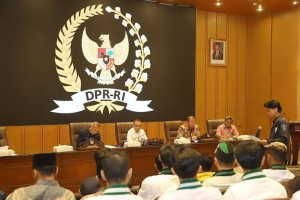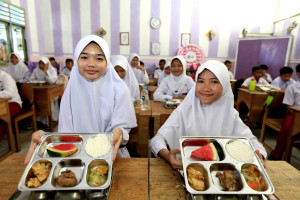Bappenas targets reduction in logistics costs to boost economy
The National Development Planning Agency (Bappenas) aims to reduce the logistics cost contribution to the national economy from 14.1 percent to 7 percent. Still the scheme may lead to monopolistic practices in the logistics sector.
Tri Dewi Virgiyanti, Bappenas Director of Transportation, acknowledged receiving feedback that logistics tariffs are currently dominated by a few major players. She, however, did not elaborate on the allegations.
"Logistics prices can sometimes become uncontrollable when a few parties monopolize or nearly monopolize the market. This is an area where governance needs to be improved," Virgiyanti told a discussion on transportation infrastructure development on May 17, 2024
She highlighted that 80 percent of logistics costs are attributed to the transportation sector, with nearly 50 percent coming from land transportation and only 25.5 percent from sea transportation.
This has resulted in Indonesia's logistics performance lagging behind neighboring countries such as Thailand, Vietnam, and Malaysia. Virgiyanti emphasized the need to enhance the performance of major domestic ports.
She identified three main factors contributing to the underperformance of Indonesia's logistics industry: inefficiency, limited transport capacity, and inadequate logistics networks.
Firstly, the travel time across major island routes remains high. Virgiyanti noted that the travel time on these routes is 2.1 hours per 100 kilometers, significantly higher than Vietnam's 1.5 hours per 100 kilometers and Malaysia's 0.7 hours per 100 kilometers.
Secondly, the use of railways for logistics transport is minimal, with rail contributing less than 1 percent to logistics transport. The majority, 91.25 percent, is carried by road transport, primarily due to the lack of intermodal facilities connecting railways with other modes of transport.
Thirdly, the economic scale of shipping vessels is inefficient. Virgiyanti pointed out that while the size of domestic vessels has increased from 700 Twenty-foot Equivalent Units (TEUs) in 2016 to 1,168 TEUs in 2022, which is still far below the ideal size of 2,500 TEUs.
Previously, Susiwijono Moegiarso, Secretary at the Coordinating Ministry for the Economy, said that the utilization of logistics infrastructure, especially port facilities in eastern Indonesia, remains below 50 percent. This is not only due to load imbalances but also because of uneven port infrastructure, necessitating improvements.
To address these issues, Bappenas and other government bodies are focusing on improving the efficiency, capacity, and speed of domestic logistics networks to enhance Indonesia's overall logistics performance and economic growth.
Tag
Already have an account? Sign In
-
Start reading
Freemium
-
Monthly Subscription
20% OFF$29.75
$37.19/MonthCancel anytime
This offer is open to all new subscribers!
Subscribe now -
Yearly Subscription
33% OFF$228.13
$340.5/YearCancel anytime
This offer is open to all new subscribers!
Subscribe now







